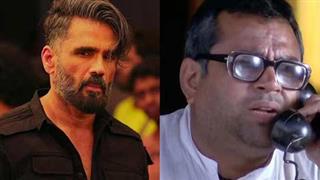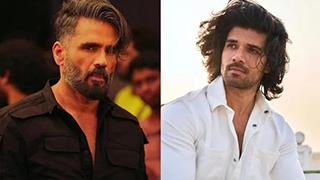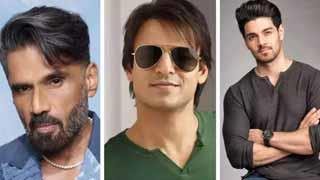Director: Prince Dhiman
Rating: **½
Creating a historical drama is no small feat-especially in an industry where comparisons with Sanjay Leela Bhansali's cinematic masterpieces are inevitable. Films like Padmaavat and Bajirao Mastani have set such a high standard for period dramas that any new entrant, no matter how well-intentioned, faces the burden of expectation. Kesari Veer, directed by Prince Dhiman, attempts to join this league but unfortunately stumbles under the weight of its own ambition.
Plot Summary: A Warrior’s Tale of Valor
Kesari Veer is centered on the legendary warrior Hamirji Gohil, who defends the sacred land of Saurashtra and the Somnath Temple from the invading forces led by the ruthless Zafar Khan (played by Vivek Oberoi). The story brings together an ensemble including Vegdaji (Suniel Shetty) and the Bhil tribe, who unite to protect their homeland.
While the premise offers rich potential for a gripping historical narrative, the execution leaves much to be desired. The film struggles to maintain a consistent tone and fails to clearly define whether it is a war drama, a biographical epic, or a romantic saga.
Weak Character Development Undermines Impact
From the beginning, Kesari Veer fails to create strong emotional connections with its characters. Entry scenes for Hamirji (Sooraj Pancholi), Vegdaji, and Rajal (Akanksha Sharma) are melodramatic yet unengaging. While Suniel Shetty impresses with his physical transformation, his role lacks narrative substance. Characters drift in and out without any significant impact, leaving the audience confused and detached.
Vivek Oberoi attempts to embody the menacing spirit of a historical villain, seemingly inspired by Ranveer Singh's iconic portrayal of Alauddin Khilji. However, his performance veers into overacting, detracting from the seriousness of the character.
The Pacing Problem: From Confusion to Unintended Comedy
The film's first half is marred by tonal inconsistencies. As it shifts awkwardly between war scenes and personal drama, viewers are left questioning the central theme. The second half, instead of intensifying the conflict, becomes unintentionally comedic. One of the film's most jarring moments comes when the protagonist, in the middle of preparing for battle, is interrupted for a sudden and over-the-top wedding sequence. This detour not only disrupts the pacing but also dilutes the urgency of the plot.
Inspiration or Imitation? Too Many Bhansali Echoes
Throughout Kesari Veer, there are unmistakable attempts to mimic the grandeur and emotional resonance of Bhansali’s works. Visual and narrative cues, including a clear homage to the iconic line from Padmaavat—“...jiska sar kate, phir bhi dhad dushman se ladta rahe, voh Rajput”—feel more like imitation than inspiration. Even the climactic battle sequence mirrors scenes from Chhaava, featuring a fight near a water body where the protagonists are outnumbered but undeterred.
Performances and Technical Execution
One of the film’s major disappointments is Sooraj Pancholi in the lead role. Despite the physical transformation, his performance lacks the depth and emotional range necessary to carry such a heavy narrative. His inability to convincingly portray a legendary warrior severely weakens the film's core.
Suniel Shetty tries to bring gravitas to his character, but the underdeveloped script offers little for him to work with. Akanksha Sharma’s portrayal of Rajal is average at best, and she fails to shine even in pivotal moments.
The visual effects are subpar and often distract from the story rather than enhance it. Monty Sharma’s background score and songs are moderately pleasing, though their excessive use disrupts the narrative flow.
Final Verdict: A Noble Vision Let Down by Execution
While Kesari Veer clearly aims to honour a lesser-known historical hero and preserve cultural pride, it lacks the cinematic finesse to make a lasting impression. The intentions behind the film are commendable, but noble goals alone do not create great cinema. With inconsistent direction, poor character development, and underwhelming performances, the film misses the mark.




















